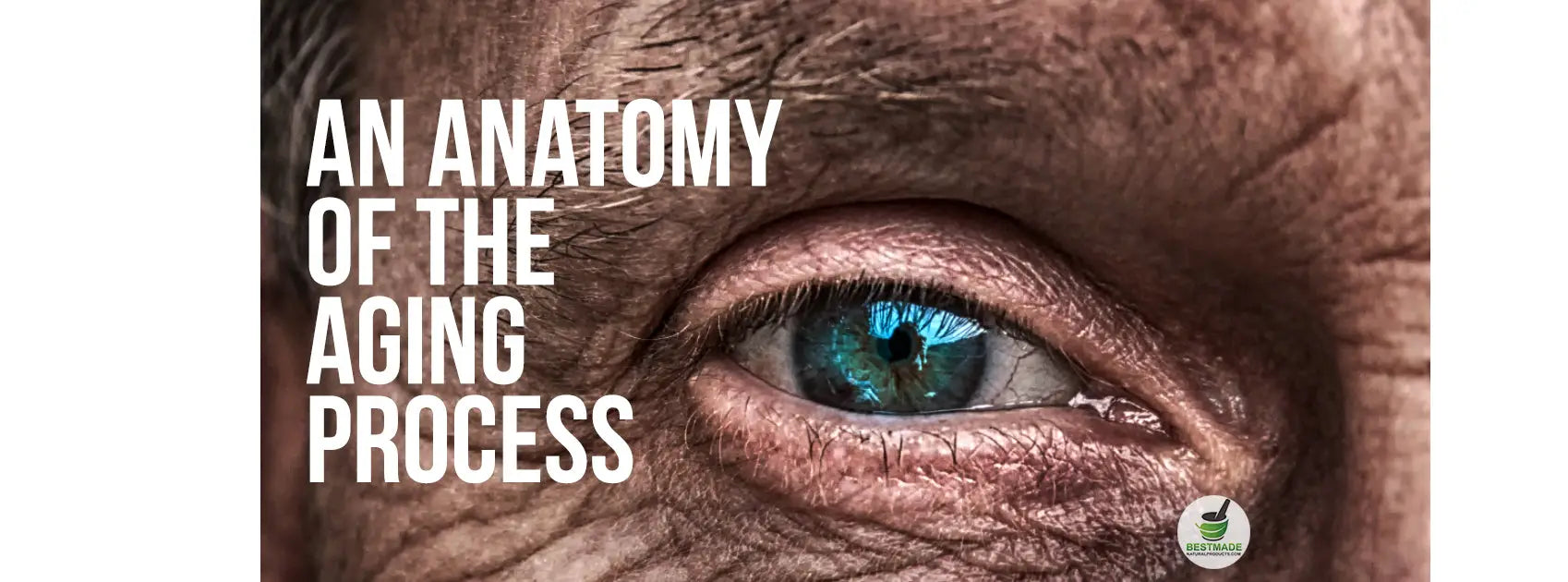
An Anatomy Of The Aging Process
We each begin to age as soon as we become mature. Some people can have the first signs of graying hair as early as in their 20s. Getting older is a natural process and it causes our bodies to change. It might show up as a little bit of extra weight around the middle, extra stiffness in the morning, or insomnia at night.

While aging is a steady and natural process, not every symptom we face is a sign of aging. Aging is a subtle process that affects everyone in different ways.
The anatomy of the aging process involves those things that change in our bodies, as we get older.
Here are some of the changes we can expect as a normal part of aging:
- Eye problems. At around 40 years of age, everyone will need to start looking for reading glasses. This is because of an eye condition known as presbyopia in which the lens of the eye stiffens and cannot refocus when we switch from far vision to near vison. Some people will begin developing cataracts, which is a clouding of the lens that can affect vision. This usually occurs right around the 60s and can be made more prominent by exposing the eyes to sun for long periods of time. Fortunately, cataracts can be repaired by having surgery that replaces the lens.

If you notice that your peripheral vision is worse than your central vision or vice versa, this could be from a serious eye problem that needs ophthalmological treatment. You could have glaucoma, in which the pressure inside the eye goes up and damages the nerves that help us see. There is also the problem of macular degeneration, which affects the middle part of the retina so that central vison is lost.
If you are having vision loss or blurry vision, you should see an ophthalmologist to have your eyes checked. Eye visits should be preventative as well, particularly if you suffer from diabetes or have a family history of macular degeneration or glaucoma.
- Hearing loss. Loss of hearing affects about 30 percent of people who are 60 years of age or older. This is also known as presbycusis and may be secondary to a loss of the receptors for hearing in the inner ear. Sounds may initially seem more muffled at first before you start to lose the ability to hear high-pitched sounds. Hearing loss seems to affect men more than it affects women. If you have ear drainage, a rapid decrease in hearing, or pain in the ear, this is not a normal part of aging and you should have this looked into. In the same way, if the hearing is worse in one ear but not the other, you should have this checked out. The hearing loss as a part of aging is extremely gradual. Sudden hearing loss is not normal.

-
Loss of Stamina or Strength. As we get older, we lose muscle mass and the muscles become less toned and increasingly rigid. While we can undergo stretching exercises and weight training in order to improve flexibility and strength, we cannot completely reverse this part of the aging process. The organs of our body tend to lose their reserve ability as well. The heart walls thicken, the arteries become stiffer, and the heart rate drops, as we get older. This is why it becomes more difficult to exercise as vigorously as we did when we were younger. Even so, it is important to stick with some kind of aerobic activity on a regular basis.
You needn’t worry unless you develop things like chest pain, shortness of breath, dizziness, fainting, or nausea with exercise. This is a sign that your heart might not be healthy enough for exercise. In addition, about 10 percent of people over the age of 65 may suffer from anemia. This can result in fatigue but is treatable with iron pills or other medications that help the body make more hemoglobin.
- High blood pressure. Essential hypertension can be a sign of aging. The exact reason why we get essential hypertension is not clear. It may be due to increased salt intake, being overweight, aging, and genetic factors. The walls of the blood vessels tend to be less elastic as we age, leading to systolic hypertension. About half of all individuals aged 60 or older have high blood pressure of some type. It can be prevented with exercise, weight loss, and a low salt diet.
- Memory loss. Momentary lapses in memory are a normal part of the aging process. There isn’t anything to worry about as long as the memory loss isn’t sudden or as long as it doesn’t affect activities of daily living. Most people with memory issues do not have any type of serious mental disease. More likely, it’s because the information processes of the brain are slowing down so that older individuals are unable to multitask as much as younger people. If, however, you can’t seem to learn new information or retain what you’ve learned, this could be a sign of age-related dementia or Alzheimer’s disease.









Leave a comment